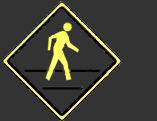
re-mix(tape) for/of the city
by Andrew Oesch + Megan Hall
These are transcripts. the words are meant to be heard and spoken. Some of these words are directions. we want you to follow us as we explore the city.
Instructions:
find a copy of John Fahey’s song “Sligo river blues” and play as accompaniment while reading.definitions:
Mixtape - A collection of songs and sounds put together. When you compile a list of songs into a new order, you have recoded the language of the music into your own series of meanings. Often, this is intended for someone you care about, given as a present.
{this is a letter to a friend. Okay, we’re going to go for a walk. The first thing you are going to do is step out of your house and start walking towards the nearest major street. Don’t walk too fast-you’ll turn down the first side street.}
Active Radio- to mobile community, a verb. This word is what the project is all about. The term is still elusive because we are in the process of defining it for ourselves.
{while you’re walking, I want to tell you what this is all about. Radio is a very personal thing. When you listen to it, it feels like one person is talking to you, not to a vast group of listeners in an auditorium somewhere Radio is a very local thing too- these conversations are flung through the air and only reach as far as the strength of the signal. we’ve created this walk to emphasis radio’s greatest strengths, that it’s local and that it’s personal.}
The City- A center of population, commerce, and culture. A town of significant size and importance.
Our city is Providence, a post-industrial town in New England, where we make our livings. It’s the “Renaissance City.” A couple hours between New York and Boston, it is the awkward sibling stuck in between. Roger Williams called Providence “A place for persons distressed for conscience.” In certain ways we’re part resident, part outsider. This place might not be our city forever, and we use the term “Our City” interchangeably with whatever city we live in. By being here and living here we make it ours. We share possession, it’s not my city or your city, it’s our city.
{Go straight for one more block past the school buses. see the house on the corner? there’s something I want to show you. look behind the gates, there’s a fountain. when i walked by during the summer, the fountain was on, it was gurgling, but now every time I walk past, it’s silent and it just looks sort of wet because of the way it is painted. I don’t know why I think this fountain is important, but it’s not just because of the pretty water sounds it used to make. Something about the spirit of placing this gurgling thing in the corner of a yard, facing the street, makes it like a little offering to the neighborhood. And without the water, it seems muted in some way. Every time I walk by I have this small wish that the water will be on again. that thought keeps my walks around this corner feeling expectant, like waiting for a postcard or a letter in my mailbox without knowing if it will ever come.}
Density of the city- We pick and choose our place in the layers of the city. The maps we typically associate with places only cover roads, water bodies, and the occasional landmark. But the city is composed of much more, each day through our lives we carve pathways and lay out new maps. In the density of all these different routes we can easily find ourselves lost. In this lost state, with the mapped routes left behind, we feel alienated from all the abundance of the city. This contrast of standing alone looking at the abundance emphasizes a feeling of loneliness.
{at the end of the block, we’re going to go to the right around this corner underneath the large tree.}
Three different roles emerge in relationship to the density- the participant in pre-existing mapped routes, the person who is immersed in making their own routes, and there is the spectator. We are participating in all three. Standing apart we act as documenters of the space, in the act of documenting, our process makes us act as participants, and our events carve new stories into the spaces.
{Coming up on the left there is a chain link fence, and the bunny is not there. . . there’s no bunny. In late spring, my partner and I would pass by and there was a bunny that was living in that fence, it was shoved waist high into the pole at the end here- some child’s discarded stuffed animal left to linger on the sidewalk. It was moved a couple of times but never left the corner. Sometimes, I used to find it shoved inside the pole head down, butt up. Any time I had a flat tire, or for some other reason decided to walk home, I’d pass by this corner to check on the bunny, and it was always there. The afternoon I broke up with my partner, I went by the corner and there was no bunny. And so I thought- no bunny- no more, it was over, and my partner agreed.}
(continued here)
